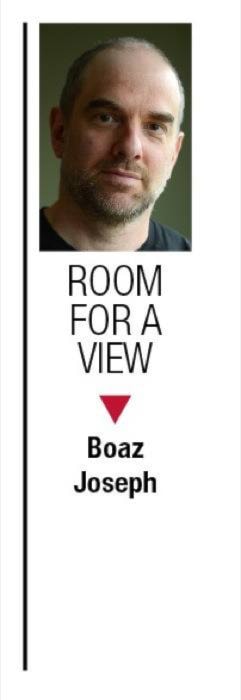A cheery, white-haired man walked into the office last week looking for copies of a particular issue.
Earlier this month, I had taken a picture of him playing with the Surrey Old Time Fiddlers.
He said it was nice being “famous” – the photo did get pretty good play – and he was happy to have copies to send to his family.
The way I see it, his visit was a final, old-school “like.”
He came in just in time, because it’s cardboard box time at the office as The Surrey Leader closes shop.
Editorial staff – the editor, reporters and photographers –have all been at the newspaper for well over 20 years.
For awhile now, we’ve scanned the horizon and watched as dark clouds formed, so we knew this day would eventually come.
The Surrey Leader: July 17, 1929 to March 31, 2017.
Sitting on a top shelf in the office closet is a 1997-era Kodak DC120 camera, our first digital, which at the time was so horrid, we could only use it for the most basic of subjects.
It allowed you to shoot one photo every six seconds – an eternity by today’s standards
It ate batteries for lunch.
On its faceplate are bold words in red: MEGA PIXEL.
It had precisely one. Downloading took almost as much time as old-school photography.
At the time, during the 1990s, we still developed film by hand.
Our darkroom had a “wall of death,” a collage of black-and-white prints of mangled cars, all shot by our resident ambulance chaser, the late Ron West.
If there was a Camaro wrapped around a pole in Surrey, Ron was there.
Photography was more energy-intensive then. One day, a sales rep knocked on the darkroom door, handed me a roll of black-and-white film and asked: “Can I get this developed (meaning, he wanted photos) in 15 minutes?”
I don’t think he really knew why he was met with laughter.
For those of you too young to remember, images were once recorded on a light-sensitive emulsion tacked onto a plastic base, taped onto a plastic spool and rolled tightly inside a metal canister.
(Ilford still makes their superb HP5 film, a fact you can Google – that word was not a verb in the days of film).
We used foul-smelling, pants-staining chemicals to develop that film: Potions such as D-76, Ilfotec HC, Dektol and a powder called fixer – the latter good as CIA torture material if you had a cut on a finger; the insane pain disappeared instantly under the flow of a water tap.
If we needed an acid trip of sorts, there was a corrosive orange agent called Stop Bath.
The film-developing process took place in total darkness. Manual dexterity was key. Things rarely screwed up if we were careful.
Only for printing were there the familiar orange/red darkroom lights.
All of this took time, of course.
The ad rep who wanted photos in 15 minutes was stuck waiting for an hour or more before the first hint of a photo.
Today, as an ad rep, you could theoretically just take the photo yourself after punching in a four-digit unlocking code on your… you get the picture.
Speaking of pictures, we have photo assignment records, mainly split between myself and Evan Seal, that count just over 28,000 going back to the 1993.
That’s assignments, not individual photos.
It’s fair to say we got to know Surrey and North Delta – the paper’s coverage area – pretty well.
There also stories of the word variety.
I always got a kick of out writing historical pieces, or stuff about older folks, the people with built-in history.
The couple who just this year celebrated their 80th anniversary, the author whose father fought in the First World War, and Second World War veteran Cliff Oswald, who was short enough to be crewed in a Sherman tank, but aimed high enough to later hand-build a monster-scale radio-controlled Mosquito bomber that I’m told is still hanging in the Air Museum of Flight in Langley.
I spent a good couple of years re-visiting him in his garage during the plane’s construction.
That story led me at the same time to have a long visit with a elderly pilot who actually flew those planes with the RAF.
It’s hard to say goodbye to the countless people I’ve interviewed and wrote about over the years: The countless cat/dog/owl rescuers, the wasp nest removers, the cancer survivors who volunteered, the Alzheimer patients and their supporters, the ultra-marathon runners, the 4’1” 16-year-old girl who could swim like a shark, the kite-builder, the microphone-masked audio describer guy who stood in the back of the theatre giving the visually impaired a chance to “see” the action in a play, and the guy who ran Surrey Memorial Hospital’s laundry service. That last story mentioned “blue elephant cocoons dangling from a computer-controlled monorail system on the ceiling.”
But it’s time to move on.
The Leader’s time has come and I won’t make further photographic visits to the local arts centres, museums, rodeo, cultural events and festivals. No more shooting breaking news or sports.
I’m sorry to see it go.
But I’m glad the old fiddler walked away happy.
SEE ALSO:
• Surrey Archives showcases Surrey Leader photographs
• From a weekly paper, to online, on demand
• Paula Carlson: Not just a job, a calling
• Evan Seal: 25 years behind the lens
• Kevin Diakiw: Thank you Surrey – over to you
• Rick Kupchuk: The road trip continues for this longtime reporter
• Frank Bucholtz: The Leader – in business for 88 years
